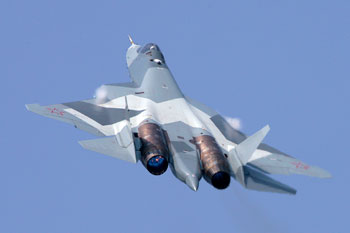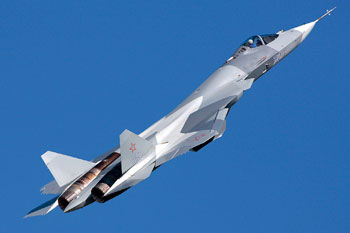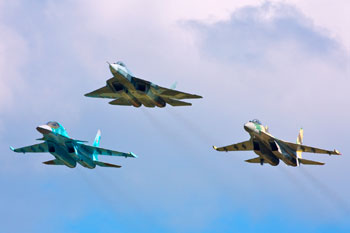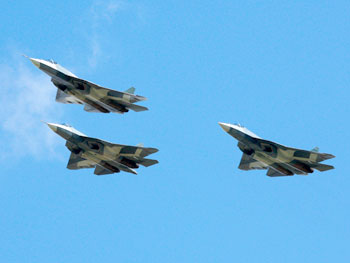INDIAN ARMED FORCES CHIEFS ON
OUR RELENTLESS AND FOCUSED PUBLISHING EFFORTS

SP Guide Publications puts forth a well compiled articulation of issues, pursuits and accomplishments of the Indian Army, over the years

I am confident that SP Guide Publications would continue to inform, inspire and influence.

My compliments to SP Guide Publications for informative and credible reportage on contemporary aerospace issues over the past six decades.
- Prime Minister witnesses 'Bharat Shakti' – a Tri-Services Firing and Manoeuvre Exercise in Pokhran, Rajasthan
- Interim Defence Budget 2024-25 — An Analysis
- Union Defence budget 2024
- Prime Minister Modi Commemorates Indian Navy Day in a Grand Ceremony
- Prime Minister Modi Flies in the LCA Tejas
- New Chapter in India-Italy Defence Ties
- Airpower beyond Boundaries
Update on PMF/FGFA programme




As things stand, the IAF plans to order 144 single-seat aircraft. Indications are that there is negligible scope for HAL to tinker with the T-50/PAK FA airframe given the timeframes provided by the IAF for delivery. Secondly, HAL will not be looking to improve upon an airframe that will be largely proven in test flights by the time the Indian PMF prototype takes shape in fabrication facilities. While development work itself may be something of a fait accompli given that the Russians are already testing a full fleet of prototypes, including two ground test aircraft, HAL has been asked not to surrender workshare in the final matrix of cooperation. Currently there are four T-50 fighter aircraft undergoing flight tests in Zhukovsky (The first flight of the PAK FA took place on January 29, 2010 in Komsomolsk-on-Amur.) Two more are dedicated to ground testing: one as a complex ground stand and the other undergoes static tests. The complexity of the negotiations and deliberations mean there is a fear that HAL could settle for much less work than initially agreed upon, thereby placing the IAF in precisely the sort of position it is looking to avoid: total dependence on Russia for yet another frontline platform.
The flight test programme had a bit of a scare in June this year when after the regular test flight of T-50 prototype at the airfield of the M.M.Gromov Flight Research Institute in Zhukovsky near Moscow, while the plane was landing, a fire broke out and smoke was observed above the right air intake. The fire was quickly extinguished but not before some damage to the airframe.The aircraft is still under repair, with the Sukhoi Design Bureau's commission still investigate the causes of the accident. Sukhoi had stated at the time that this incident would not affect the timing of the T-50 test program.
In February this year, one prototype of the T-50, piloted by the test pilot of the 1st Class Sergey Chernyshev, flew to the 929th Chkalov State Flight Test Centre’s airfield in Akhtubinsk for joint testing, where the aircraft was put through aero-dynamic features evaluation, tests of stability and controllability and of dynamic strength, function check of on-board equipment and aircraft systems. According to Sukhoi, the optical locator system as well as active electronically scanned array radar was tested on the aircraft with "positive results obtained". Crucial air refueling mode was also tested. "Supermaneuverability tests of the aircraft are under way. Aircraft systems are being tested on the test stands, ground experimental works continue," the design bureau states.
Constant comparisons with the F-22 Raptor and F-35 Lightning II don't bother the Russians too much. They believe that a long-term relationship makes them a natural partner in the PMF programme. "Compared to the previous generation fighters, the PAK FA combines the functions of a strike aircraft and a fighter, thus offering a number of unique capabilities. The use of composite materials and innovative technologies plus the aerodynamic layout of the aircraft, special airframe coating and measures to reduce the power plant, antenna and cockpit signature assure unprecedentedly low radar, optical and infrared observability. This considerably improves the operational effectiveness against air and ground targets at all times and in all weathers," says Sukhoi.
HAL says, "The proposed FGFA will have air combat superiority, high tactical capability, group action capability in the regions even with poor communication support. The aircraft will have advanced features like increased stealth, supersonic cruise, sata link and network centric warfare capability."





